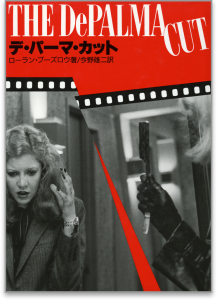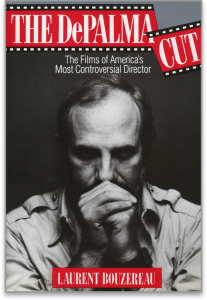In addition to refuting the persistent charges of Hitchcockian mimicry and blatant misogyny, Laurent Bouzereau illustrates in his book, THE DE PALMA CUT, the director’s originality, his unsurpassed eloquence with the camera, and his inventive presentation of points of view, as well as explores De Palma’s major themes: sexuality, guilt, the double, and voyeurism.
“Admirers of Brian De Palma will be indebted to Laurent Bouzerearu for his thorough and well-researched analysis of the films and the filmmaker.” —Robert Bloch
Brian De Palma, one of the most interesting and controversial American directors, has a visual style that is easily recognizable. His ability to convey a story through the cutting and grouping of scenes, sans dialogue, has produced some of the most visually compelling films currently being made. Although Laurent Bouzereau, a film journalist, met De Palma on several occasions and also interviewed him, he relied on De Palma’s body of work as his major source for THE DE PALMA CUT. Bouzereau begins with the obligatory film-by film description necessary for this type of book, but he proceeds with an exploration of each film by recurring themes.
“This intriguing book has facts about Brian’s movies as fascinating as the man himself. I even loved reading what I already knew. Wonderfully researched!” —Angie Dickinson
Voyeurism, sexual disturbances, guilt, and the use of the double are themes that De Palma has employed in most of his films. Bouzereau also addresses areas where De Palma has received negative criticism, most notably, his treatment of women. The razor-slashing death of Angie Dickinson in Dressed to Kill and the infamous electric-drill murder of Deborah Shelton in Body Double caused sensationalism that Bouzereau feels clouds the issue of De Palma’s overall treatment of women. There are also the inevitable comparisons to Hitchcock that have been both a blessing and curse for De Palma. Not only is this book a comprehensive and thorough analysis of De Palma’s work, but Bouzereau devotes equal time to the director’s earlier, lesser-known films, such as Greetings and Sisters. His critiques are thought-provoking and insightful. Since De Palma is one of America’s most controversial and popular filmmakers, this book would be a welcome addition to film collections. -Independent Publisher

